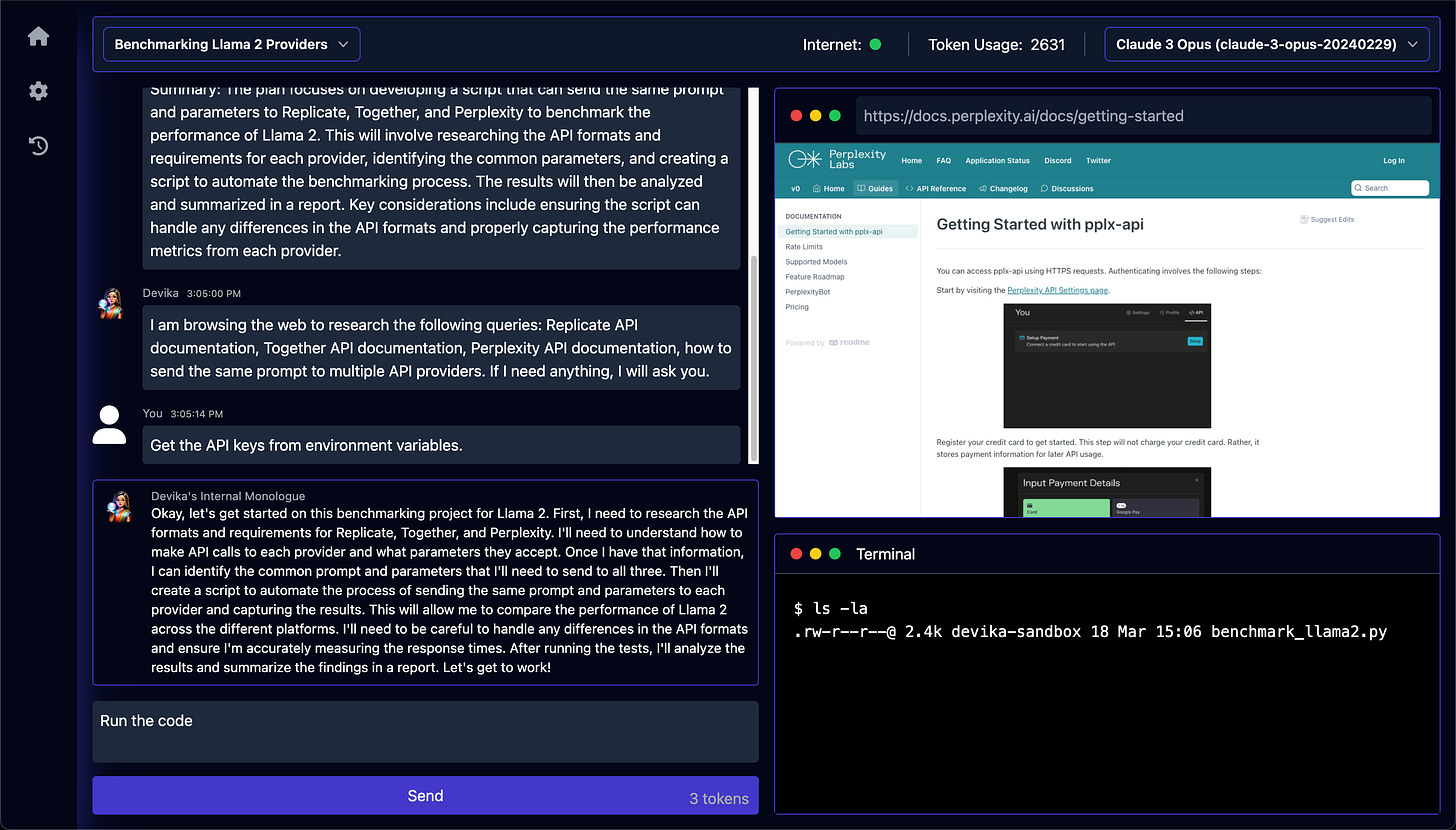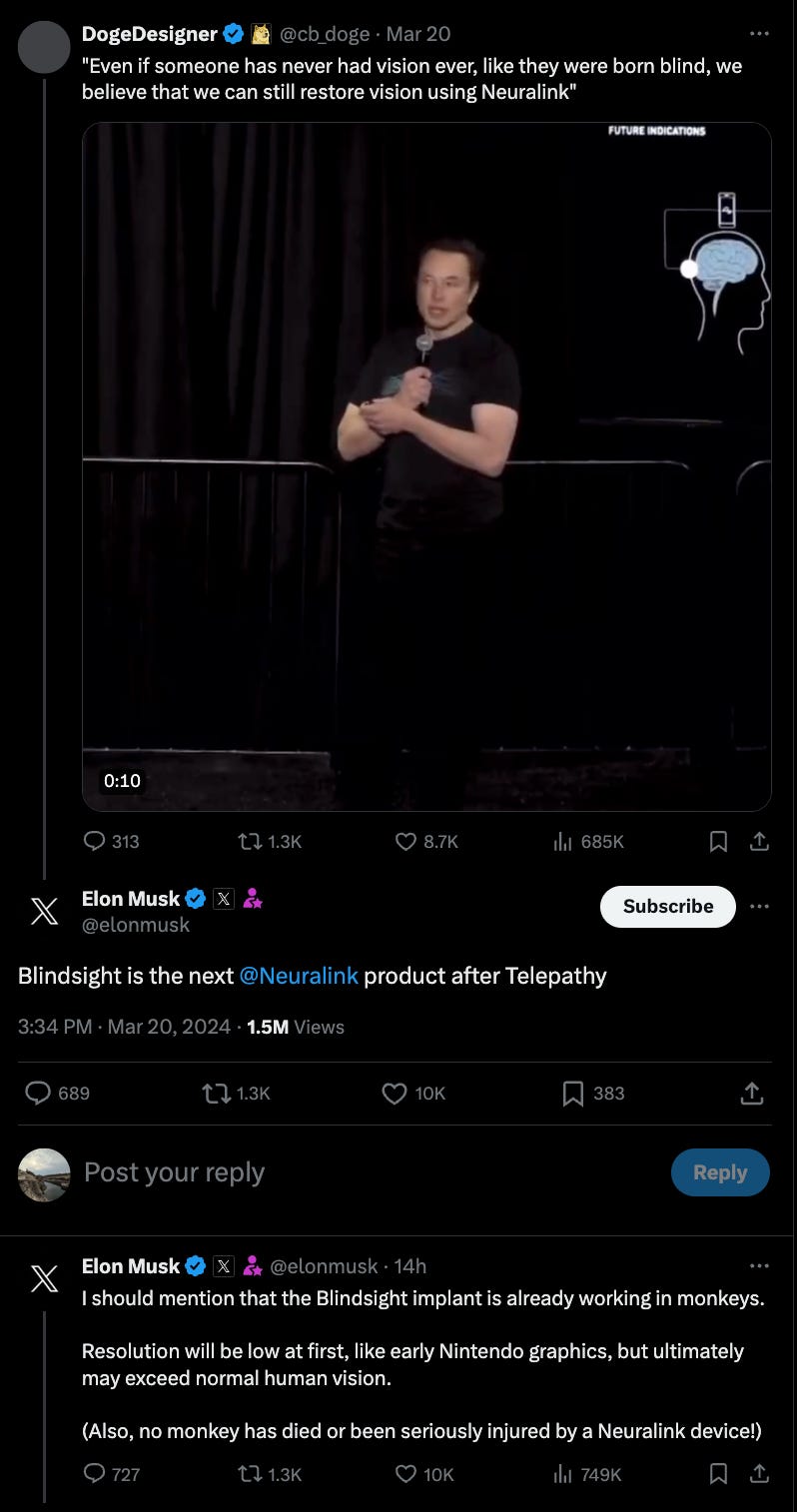
Today’s top AI Highlights:
-
Open Interpreter launches portable AI device that controls your home computer
-
Devika, opensource AI software engineer
-
Elon Musk’s Neuralink plans a device for blind people to see
-
Create full, two-minute songs in seconds with Suno V3
-
Runway and Musixmatch collaborate for lyrics-to-video tool
& so much more!
Read time: 3 mins
Talking is the most convenient way to communicate, with anyone or anything. For years, we all have wished to operate our computers with this same convenience. We just speak and tell it what to do, and it should do it. Two years back ChatGPT brought us closer to this idea, and now we are seeing an influx of AI-powered devices like Humane’s AI Pin and Rabbit R1 that make it easier for us to do tasks without our physical input on any screen.
Stepping into this space and making a bold move forward with opensourcing the tech, Open Interpreter has released 01a portable AI device that’s as easy to chat with as a person. It is the first open-source language model computer, which can operate our computer through voice commands. It can see our screen, use our apps, and learn new skills.
Key Highlights:
-
It uses Llama 2 as the language model, OpenAI’s Whisper for speech-to-text, and Piper for text-to-speech function. It can run the language model either locally or via a cloud server through WiFi or hotspot connections.
-
At the heart of 01 is the 01OS designed to power AI devices. It’s built for conversational interactions, making it capable of running complex commands and tasks through simple voice prompts.
-
The device can perform tasks like managing the calendar, searching the web, sending messages, and managing emails, and desktop files. What makes 01 stand out from the AI Pin and Rabbit R1 is the ability to learn new tasks directly from you, such as operating a new desktop application or performing customized workflows that it has never done or seen before, without preset configurations.
-
The One Lite is available for preorder at $99. The team plans to release future iterations as a standalone device just like the AI Pin without needing to connect it with a computer.
The landscape of software engineering is gradually shifting to engineers being involved only at a surface level, while the entire workflow is automated using AI. We saw a step towards this with Cognition releasing Devinthe world’s first fully autonomous AI software engineer that can understand high-level instructions, plan, research, and code to achieve specified objectives.
Here’s an opensource alternative to Devin, Devikathat aims to be at least as smart as Devin (beating its highest-ever SWE score). Devika is an advanced AI software engineer that can understand high-level human instructions, break them down into steps, research relevant information, and write code to achieve the given objective.
Key Highlights:
-
Devika involves 12 agentic models that can interact with each other in a feedback loop to understand, browse, research, code, document, and make decisions according to your query to complete a project.
-
She leverages state-of-the-art language models like Claude 3, GPT-4 and 3.5, and local LLMs via Ollama for natural language understanding, generation, and reasoning.
-
Devika incorporates browser interaction capabilities to navigate websites, extract information, and interact with web elements to incorporate real-time data into her decision-making and code-generation processes.
-
She supports code writing in multiple programming languages, autonomously debug and patch code, dynamic tracking of agent states, and employs keyword extraction for focused research, reflecting a sophisticated understanding of project-based organization and management.
-
Both Devin and Devika reduce the manual workload of human engineers by autonomously managing complex tasks. Devin has already demonstrated its capabilities with projects like building end-to-end applications, training and fine-tuning its own AI models, and completing actual projects on Upwork. While Devin is proprietary, the creators want to make Devika better with opensource contributions.
Elon Musk’s Neauralink had successfully implanted their brain-computer interface in their first human subject, in January this year, and the device was able to detect the neuron spike. Yesterday, Neuralink went live on X introducing him and the progress he has made since then. He was able to control the cursor solely from his mind, and said that he could now play chess and Civilization on his laptop with the Neuralink’s device. He is Noland Arbaugh, a 29-year-old man who has been paralyzed completely below his shoulders for eight years after an accident.
Musk’s venture Neuralink, is developing technology that connects the human brain directly with computers. Their device is about the size of a coin and is designed to be embedded in the skull to interact with brain cells. It functions by connecting tiny wires a short distance into the brain to read neuron activity.
Post this, in a rather very casual way, Elon Musk announced his newly created Neuralink will be able to cure blindness. The technology would see 64 tiny wires implanted by a Neuralink surgical robot into the visual cortex, the part of the brain that allows you to see. The Nueuralink would then be able to bypass the eye and create a visual image in the brain. Musk said that the resolution will be low at first, like early Nintendo graphics, but ultimately may exceed normal human vision.
The user would be required to wear a digital camera, which would then wirelessly transmit a live visual feed via Bluetooth to a mobile. The phone would then turn that image data into a neural signal, which would be transplanted back into the Neuralink chip, transmitting neural signal into the brain enabling the user to see. (Source)
-
Suno V3: Suno, one of the most famous text-to-music platforms, has released its latest version with which you can make a song for any moment in any major language with just a few short words. It produces two-minute radio-quality songs in seconds. It features better audio quality, more genres, and more prompt adherence with less hallucination and more graceful endings.
-
Lyrics to Video: Runway and Musixmatch have partnered to enable creators to generate videos for their songs with just the song’s lyrics. Musixmatch AI extracts the structure and the meanings of lyrics and Runway’s best-in-class generative video model makes generating music videos faster and more unique.
-
Inkflow: Generate a complete book with just a few clicks. You just have to enter the book title, select the structure of the book, select the LM, and Inkflow produces a draft of a 20,000+ word book that is saved as a .docx file for easy editing and review. It is primarily for non-fiction books.
-
phidata: A toolkit for building AI assistants with function calling and connecting LLMs to external tools. You can use it to let LLMs do web search, data analysis, send emails, or access your application-specific logic.
😍 Enjoying so far, TWEET NOW to share with your friends!
-
going back in time to try to explain how crazy it is that we have a guy who makes electric cars and rocket ships and brain computer interfaces yet a bunch of people hate him because they dont like his politics or whatever & having them show me a cave drawing of the astronaut meme ~
sophie -
I think AI agentic workflows will drive massive AI progress this year — perhaps even more than the next generation of foundation models. ~
That’s all for today! See you tomorrow with more such AI-filled content.
⚡️ Follow me on Twitter @Saboo_Shubham for lightning-fast AI updates and never miss what’s trending!
PS: I curate this AI newsletter every day for FREE, your support is what keeps me going. If you find value in what you read, share it with your friends by clicking the share button below!





![runwayxmusixmatch3.24.mp4 [optimize output image] runwayxmusixmatch3.24.mp4 [optimize output image]](https://substackcdn.com/image/fetch/w_1456,c_limit,f_auto,q_auto:good,fl_lossy/https%3A%2F%2Fsubstack-post-media.s3.amazonaws.com%2Fpublic%2Fimages%2Fde4a156d-879b-4bca-a9f6-c6cec6079571_600x338.gif)































































































































































































































































































































































































































































